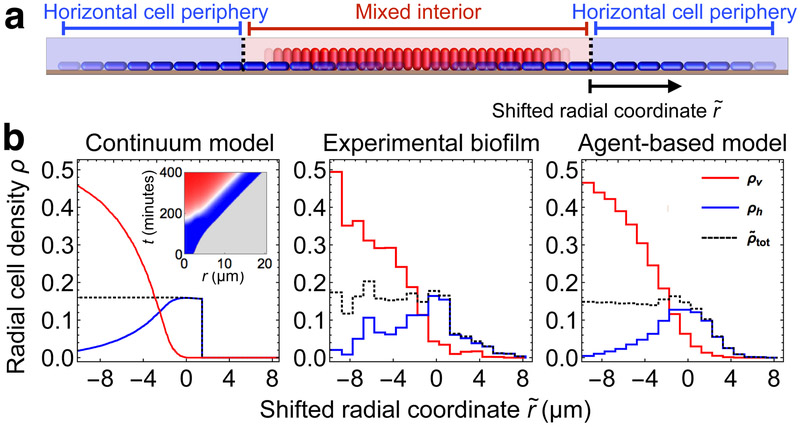Figure 3.
Two-component fluid model for verticalizing cells in biofilms. (a) Schematic illustration of the two-component continuum model. Horizontal cells (blue) and vertical cells (red) are modeled, respectively, by densities ρh and ρv in two spatial dimensions. The total cell density is defined as ρh + ξρν, where ξ is the ratio of vertical to horizontal cell footprints. (b) Radial densities ρ of vertical cells (ρv, red), horizontal cells (ρh, blue), and total density (, black), versus shifted radial coordinate , defined as the radial position relative to the boundary between the mixed interior and the horizontal cell periphery. Results are shown for the continuum model (left; radial cell density in units of μm−2), the experimental biofilm (middle; radial cell density in each μm-sized bin averaged over an observation window of 50 minutes), and the agent-based model biofilm (right; radial cell density in each μm-sized bin averaged for ten biofilms over an observation window of 6 minutes). For the continuum model and the agent-based model biofilms the parameters were chosen to match those obtained from the experiment (Supplementary Figs. 12-13). Inset in the left-most panel shows the fraction of vertical cells in the continuum model at a given radius from the biofilm center (gray regions contain no cells, color scale is the same as in Fig. 1).

